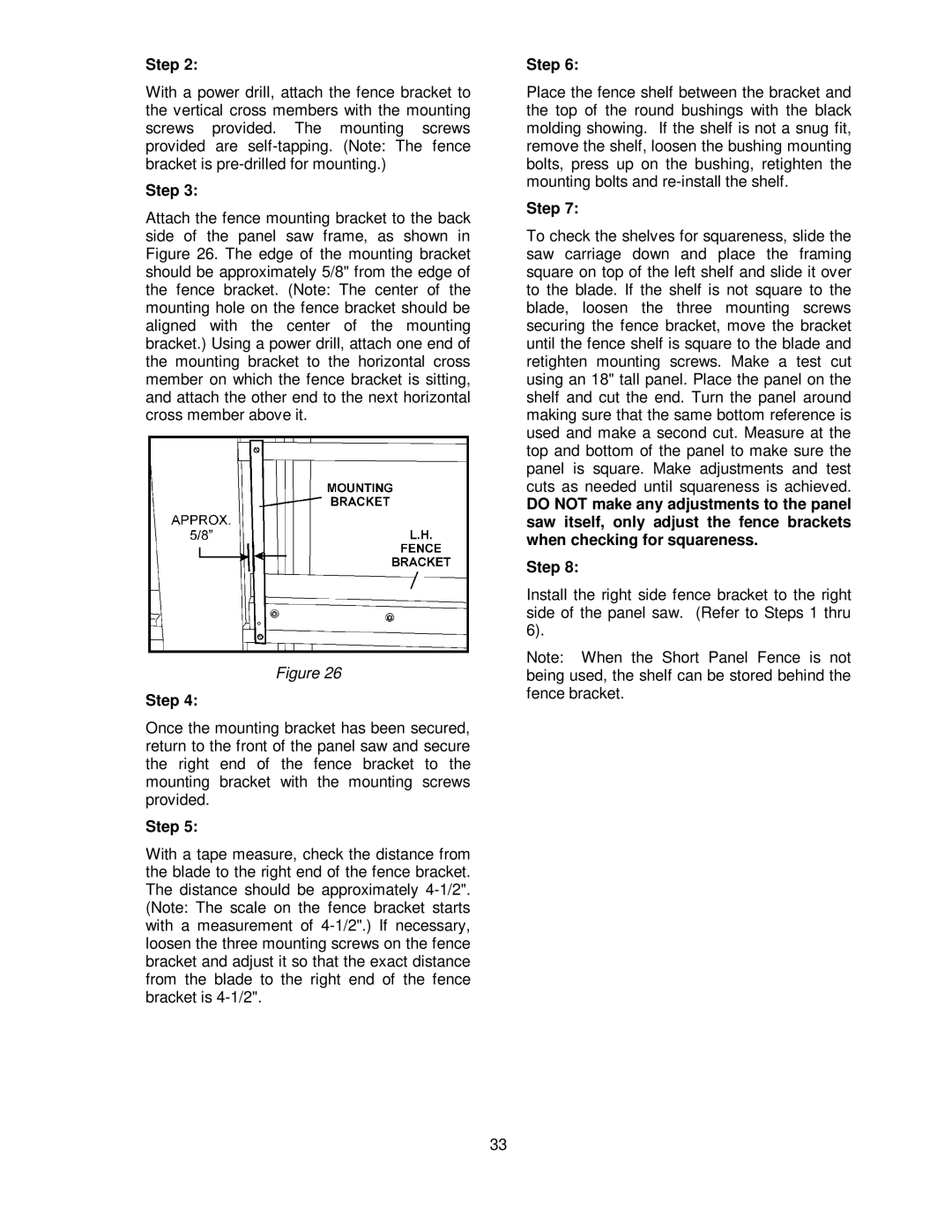511 specifications
The Powermatic 511 is a revered tool in the woodworking community, known for its solid construction and innovative features. Tailored for both hobbyists and professionals, it provides precision and efficiency to enhance woodworking projects.At the heart of the Powermatic 511 is its robust design, which is built to withstand heavy use while maintaining optimal performance. The cast iron table provides excellent stability, minimizing vibration and ensuring that workpieces remain secure during operations. This solid foundation also contributes to a larger working surface, allowing users to tackle larger materials with ease.
One of the standout features of the Powermatic 511 is its powerful motor, which delivers consistent performance even under demanding conditions. This ensures that the machine can easily handle various types of wood, from softwoods to hardwoods, without compromising on speed or quality. The precision-ground table aids in achieving accurate cuts, offering users confidence in their results.
The machine incorporates advanced technologies, such as innovative dust collection systems that help maintain a clean work environment. This not only enhances the user's experience but also contributes to better health by reducing exposure to wood dust. The ease of dust extraction is a critical factor, especially in workshops where cleanliness is paramount.
Another notable characteristic of the Powermatic 511 is its user-friendly controls. The intuitive design allows for easy adjustments, ensuring that users can quickly switch between functions without extensive setup. This accessibility makes it an ideal choice for both beginners and seasoned woodworkers who value efficiency and simplicity.
Versatility is also a key aspect of the Powermatic 511. It supports a variety of tasks, making it suitable for different woodworking techniques. Whether it’s for shaping, sanding, or finishing, this tool adapts to multiple applications, reducing the need for additional equipment.
In summary, the Powermatic 511 is a powerful, efficient, and versatile tool that embodies the essence of quality woodworking. Its solid construction, advanced technologies, and user-friendly features make it a valuable addition to any workshop, helping craftsmen bring their creative visions to life with precision and ease. Investing in the Powermatic 511 means investing in tools that enhance your woodworking journey, ensuring that both novices and experts appreciate its capabilities.

